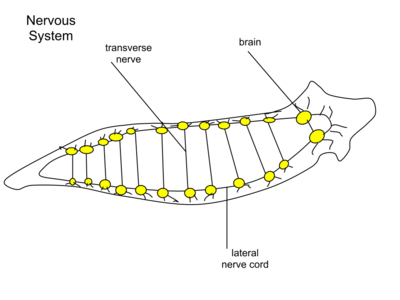
Terrestrial animals are animals that live predominantly or entirely on land (e.g., cats, ants, emus), as compared with aquatic animals, which live predominantly or entirely in the water (e.g., fish, lobsters, octopuses), or amphibians, which rely on a combination of aquatic and terrestrial habitats (e.g., frogs). The term terrestrial is also frequently used for species that live primarily on the ground, in contrast to arboreal species, which live primarily in trees.
Taxonomy
Terrestrial invasion is theorized to be one of the most important events in the history of life. Terrestrial lineages theoretically evolved in several animal phyla, among which vertebrates, arthropods, and mollusks are representatives of more successful groups of the epifaunal terrestrial life.
Terrestrial animals do not form a unified clade; rather, they share only the fact that they live on land. The transition from an aquatic to terrestrial life has theoretically evolved independently and successfully many times by various groups of animals, though this can't be proven through current scientific data. Most terrestrial lineages are theorized to have originated under mild or tropical climate during the Paleozoic and Mesozoic, whereas few animals became fully terrestrial during the Cenozoic.
When excluding internal parasites, free living species in terrestrial environments are represented by the following ten phyla; Flatworms (Planaria), Nemertea (ribbon worms), Nematoda (roundworms), Rotifers, Tardigrada (water bears), Onychophora (velvet worms), Arthropods, mollusks (gastropods: land snails and slugs), Annelida and Chordata (tetrapods). Roundworms, tardigrades, and rotifers are microscopic animals that require a film of water to live in, and are not considered truly terrestrial. Flatworms, ribbon worms, velvet worms and annelids all depend on more or less moist habitats, while the three remaining categories, arthropods, gastropods and tetrapods, are the only ones that contain species that have adapted to predominantly dry terrestrial environments.
Pictures of terresttrial animals:
 Planaria worm -
Planaria worm - A planarian is one of many non-parasitic flatworms of the Turbellaria class. It is also the common name for a member of the genus Planaria within the family Planariidae. Sometimes it also refers to the genus Dugesia.[2]
Planaria are common to many parts of the world, living in both saltwater and freshwater ponds and rivers. Some species are terrestrial and are found under logs, in or on the soil, and on plants in humid areas.
Some planarians exhibit an extraordinary ability to regenerate lost body parts. For example, a planarian split lengthwise or crosswise will regenerate into two separate individuals. Some planarian species have two eye-spots (also known as ocelli) that can detect the intensity of light, while others have several eye-spots. The eye-spots act as photoreceptors and are used to move away from light sources. Planaria have three germ layers (ectoderm, mesoderm, and endoderm), and are acoelomate (i.e. they have a very solid body with no body cavity). They have a single-opening digestive tract, in Tricladida planarians this consists of one anterior branch and two posterior branches.
 Polycelis felina, a freshwater planarian
Polycelis felina, a freshwater planarian Anatomy and physiology
The planarian has very simple organ systems. The digestive system consists of a mouth, pharynx, and a structure called a gastrovascular cavity. The mouth is located in the center of the underside of the body. Digestive enzymes are secreted from the mouth to begin external digestion. The pharynx connects the mouth to the gastrovascular cavity. This structure branches throughout the body allowing nutrients from food to reach all extremities. Planaria eat living or dead small animals that they suck with their muscular mouths. Food passes from the mouth through the pharynx into the intestines where it is digested by the cells lining the intestines. Then its nutrients diffuse to the rest of the body.Planaria receive oxygen and release carbon dioxide by diffusion. The excretory system is made of many tubes with many flame cells and excretory pores on them. Flame cells energize unwanted liquids from the body by passing them through ducts that lead to excretory pores where waste is released on the dorsal surface of the planarian.
